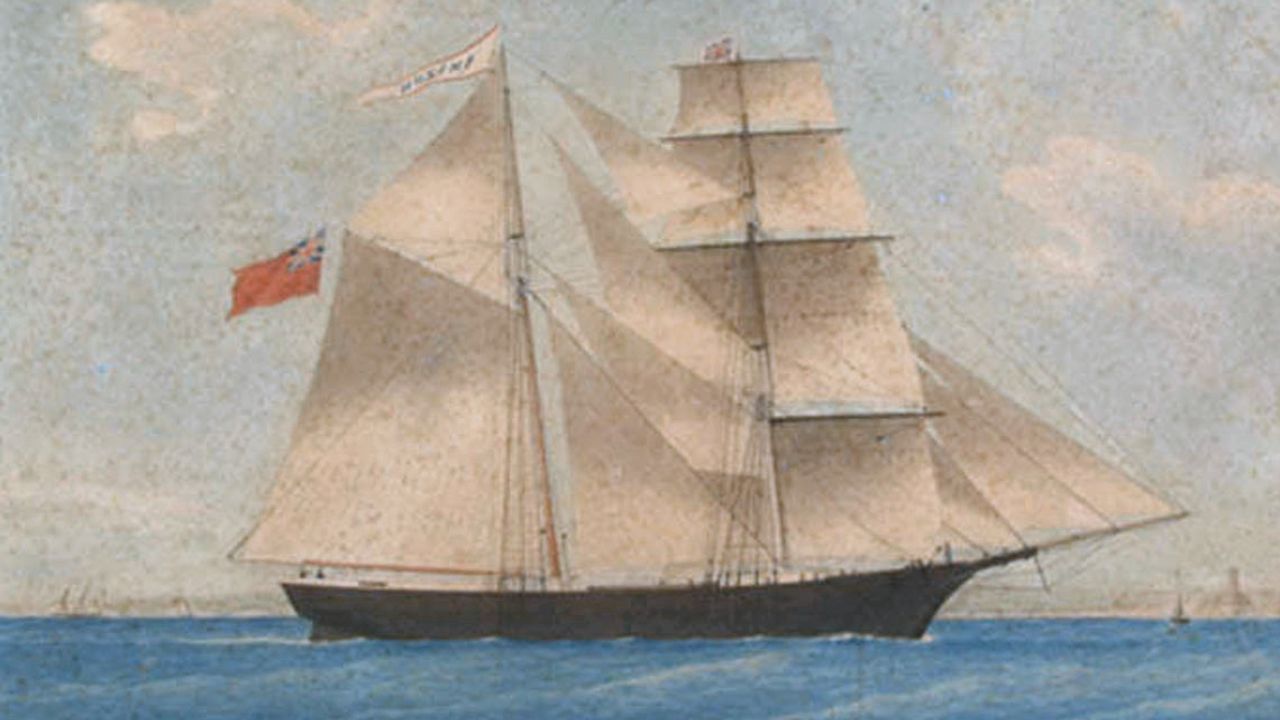Over the horizon and into the boundless expanse of the sea sailed the Mary Celeste, a merchant brigantine renowned not for its voyages or the goods it carried, but for the enduring mystery that enshrouded it. On a fateful day in 1872, the Mary Celeste set sail from New York to Genoa, fully loaded with barrels of alcohol, a crew of eight, one captain – Benjamin Briggs, his wife, and their two-year-old daughter. Just a month later, on December 4th, the vessel was discovered adrift, its cargo and valuables untouched, but the crew mysteriously vanished.
What happened on board the Mary Celeste has captivated maritime lore and continues to baffle historians, scientists, and sea enthusiasts alike. The missing crew left no sign of a struggle, no indication of foul play, and, most puzzlingly, all personal belongings and navigation equipment remained on the ship. The last entry in the ship’s log showed nothing out of the ordinary and gave no hint as to why the vessel was abandoned. This inexplicable event fueled the mystery of the Mary Celeste and amplified its status as the quintessential ghost ship.
Over the years, many theories have been proposed in an attempt to explain the mystery. Some believe that the ship’s cargo of industrial alcohol might have leaked and caused an explosion. Others speculate that a water spout or a freak wave might have swept the crew overboard. Another theory postulates that the crew, suspecting their ship was sinking, escaped in a lifeboat that subsequently got lost at sea. Piracy and mutiny have also been put forward as possible explanations. Yet, each theory has its flaws, and none can comprehensively account for the complete disappearance of the crew and their failure to reach land or be found.
In the realm of the supernatural, stories of sea monsters, ghostly apparitions, and alien abductions have also been woven into the fabric of the Mary Celeste narrative. These fantastical theories add an extra layer of intrigue and serve to immortalize the ship in popular culture. Indeed, the ship’s tale has inspired countless books, films, and TV episodes, transforming it into a symbol of maritime mystery and sustaining public interest in its story.
However, despite all the speculation and fantastical stories, the truth about the Mary Celeste remains elusive. Rigorous scientific and historical investigations have provided possible explanations but no concrete evidence. Moreover, every theory presented is marred by a lack of definitive proof or contradicted by the details of the ship’s discovery. The ship was found seaworthy, the cargo intact, and the crew’s belongings undisturbed, contradicting theories of catastrophic weather events or piracy.
Ultimately, the Mary Celeste continues to drift through the annals of maritime history, her story shrouded in uncertainty and speculation. The truth about what happened during her last voyage may forever be hidden beneath the depths of the Atlantic, concealed within the logbook’s last entry, or lost with the crew who vanished without a trace.
While the real story of the Mary Celeste may never be uncovered, the ship’s enduring legacy continues to ignite our fascination with the unknown. She sails on as an indelible icon of mystery and intrigue, her tale reminding us that the world – especially the uncharted waters of the ocean – still holds secrets that defy our understanding.
So, does the mystery of the Mary Celeste still remain? Undoubtedly, yes. In the face of scientific advancement and maritime progress, the ghost ship continues to resist explanation. Its legend lives on, fueled by a mix of facts, theories, and mythologies that lend the Mary Celeste its haunting allure. Until the waves of time finally wash up an answer on our shores, the tale of the Mary Celeste will remain one of history’s most captivating maritime mysteries.











0 Comments